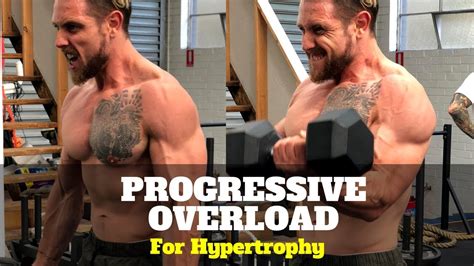Optimal progressive overload for continuous strength & hypertrophy gains?

Progressive overload is the cornerstone of effective strength training and muscle hypertrophy. Without continually challenging your muscles beyond their current capabilities, your body has no reason to adapt and grow stronger or larger. It’s the fundamental principle that drives all long-term physical improvements in resistance training. But what exactly constitutes “optimal” progressive overload, and how can you implement it consistently for relentless gains?

The Core Methods of Progressive Overload
Progressive overload isn’t just about adding more weight. It encompasses various strategies to increase the demand placed on your muscles. Understanding these methods allows for more flexible and sustainable progression.
- Increasing Load (Weight): The most straightforward method. Once you can comfortably hit your target reps with a given weight, increase the weight for the next set or session.
- Increasing Repetitions: If increasing weight isn’t feasible, try adding more reps to your sets with the same weight. This increases total work and time under tension.
- Increasing Sets (Volume): Adding an extra set to an exercise, while keeping weight and reps constant, increases the total volume of work.
- Decreasing Rest Intervals: Reducing the time between sets makes the subsequent sets more challenging, as your muscles have less time to recover. This boosts training density.
- Increasing Frequency: Training a muscle group more often throughout the week (e.g., twice instead of once) can provide more opportunities for stimulus and growth, provided recovery is managed.
- Improving Exercise Technique/Range of Motion: Performing an exercise with stricter form, a fuller range of motion, or a slower eccentric phase can significantly increase the demand, even if the weight remains the same.
- Increasing Time Under Tension (TUT): Deliberately slowing down the tempo of repetitions, especially the eccentric (lowering) phase, can increase the total time your muscles are working, promoting hypertrophy.

Balancing Variables for Targeted Gains
The “optimal” approach often depends on your primary goal.
For strength gains, the focus typically leans towards higher intensity (heavier weights) with lower repetitions, often coupled with sufficient rest between sets to ensure maximum force production. Progressive overload will primarily involve increasing the weight lifted, even if it means slightly lower reps at times.
For hypertrophy (muscle growth), a broader range of loads and repetitions can be effective, often emphasizing higher total volume (sets x reps x weight). While increasing weight is still important, increasing reps, sets, or time under tension can be equally effective. The goal is to accumulate sufficient mechanical tension, muscle damage, and metabolic stress.

Strategic Implementation and Periodization
Consistent, linear progression (e.g., adding weight every week) is effective for beginners, but it eventually plateaus. This is where strategic planning and periodization come in.
- Linear Periodization: Gradually shifts from higher volume/lower intensity to lower volume/higher intensity over several weeks or months, followed by a deload or active recovery phase.
- Undulating Periodization: Varies the intensity and volume more frequently (e.g., daily or weekly), allowing for different types of stimulus within a single training cycle. This can be more sustainable for advanced lifters.
- Dealing with Plateaus: When progress stalls, it’s a sign to change something. This could involve adjusting rep ranges, varying exercise selection, trying a different progressive overload method, taking a deload, or re-evaluating recovery (sleep, nutrition).
- Listening to Your Body: Overtraining is counterproductive. Pay attention to persistent fatigue, joint pain, or decreased performance. Sometimes, the most optimal progressive overload is to back off, recover, and come back stronger.

Advanced Considerations for Sustained Progress
Even with sound programming, the body needs breaks. Deload weeks are crucial for recovery and preventing burnout. During a deload, you significantly reduce volume and/or intensity for a week, allowing your body to repair and supercompensate, often leading to a stronger return to training.
The concept of training to failure also plays a role. While not every set needs to be taken to absolute muscular failure, strategically pushing closer to failure (or even beyond with advanced techniques like dropsets or rest-pause) can be a powerful stimulus for growth, particularly for hypertrophy. However, it requires careful management to avoid overreaching.

Conclusion
Optimal progressive overload is not a single formula but a dynamic, individualized process. It demands consistent effort, intelligent programming, and a keen awareness of your body’s responses. By systematically applying the various methods of overload, balancing intensity and volume, strategically periodizing your training, and prioritizing recovery, you can ensure continuous strength and hypertrophy gains, transforming your physique and performance over the long haul. Remember, the key is to always strive for a little more than last time, intelligently and sustainably.








